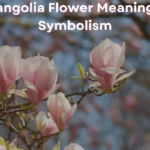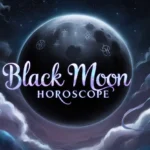The meanings of hibiscus flowers include fleeting beauty, passionate love and romance, hospitality, friendship, and joy.
Explore the Rich History and Symbolism of Hibiscus Flower Meaning

Originating in Asia, the hibiscus is the emblematic tropical flower that later spread to other warm regions of the world, including Australia, Polynesia, New Zealand, Florida, Hawaii, and the Caribbean. Hibiscus blossoms are valued for their beauty as well as for their great spiritual significance in numerous civilizations.
This article will cover all facets of hibiscus symbolism and meaning, including its spiritual and aesthetic significance. We’ll also go through how to grow hibiscus plants, how to take care of them, and how to use them.
Hibiscus Flower – What does it mean?
Feminity
Hibiscus flowers are representations of femininity and all forms of female beauty, with stunning blossoms that range in size from 4″ to 10″. They stand for the strength of femininity’s capacity for receptivity. It’s possible to suggest that hibiscus blooms represent the law of attraction. They inspire awe and admiration simply by being themselves.
Ephemeral essence
Hibiscus flowers only bloom for one day while still attached to the vine, making them a representation of the value of fleeting beauty. The hibiscus flower serves as a reminder that something sacred is present at all times, much like the butterfly and dragonfly spirit animals.
Hibiscus flowers represent potential because they also represent ephemerality. They serve as a reminder to enjoy the present because it might not happen again.
Passion and romantic love
Hibiscus flowers are a representation of romantic love and affection due to their fiery pink and vivid red blossoms. The ideal gift for a sweetheart would be these flowers. Additionally, if you’re single, they are seen as good luck because they will increase your chances of finding true love and bring more romance into your life.
Hospitality and friendship
The meaning of the hibiscus flower also encompasses friendliness, charity, and hospitality. Hawaiians intentionally incorporate these exquisite blossoms into their leis. The hibiscus is a symbol of aloha, which means welcome.
Sincerity
Hibiscus blossoms have a striking brightness. These flowers don’t hide away in inaccessible regions, making them the antithesis of shrinking violets. They represent honesty and openness as a result. In addition to being welcome symbols, hibiscus flowers also represent sincerity and generosity.
Joy
It nearly goes without saying that joy is another aspect of the hibiscus flower’s meaning. The hibiscus enhances life’s enjoyment just like music and painting do. In addition to making individuals feel happier, their vibrant colors certainly inspire them to consider traveling to a tropical location.
Hibiscus Flower – Its spiritual meaning
The definition of hibiscus includes femininity. So, these flowers are also representations of the divine feminine on a spiritual level. It’s also crucial to remember that embracing balanced male and feminine energy is good for both men and women. The ability to generate and nurture life is a component of female power. Therefore, cultivating and maintaining hibiscus flowers is a method to respect all life on Earth.
The hibiscus totem is also useful for enhancing your life’s beauty, love, and romance. Our spiritual travels on this planet might be difficult at times. The hibiscus flower, like the hummingbird, serves as a reminder to us to see the beauty and delight in our spiritual travels as well.
Spirit Animals related to Hibiscus flowers
The hibiscus flower and various insects and wild animals have symbiotic relationships and share some properties. For instance, flowers and butterflies co-evolved, and now they both depend on one another to survive. Additionally, there are other connections between the hibiscus and the butterfly’s spirit animal. They are both not just breathtakingly gorgeous, but also fleeting. The hibiscus and the butterfly are therefore images of living in the present and seizing the day.
The spirit creatures of the bee, the bat, and the hummingbird are also strongly related to the hibiscus flower. Bats, hummingbirds, and bees are drawn to and fed by the hibiscus’ nectar. By dispersing its pollen, these creatures increase the lifespan of the hibiscus flower in return.
The hibiscus flower and two additional spirit animals have similar characteristics. One is the flamingo, a bird that also represents colorful beauty. The sea turtle, a symbol of tranquility and the tropics, is another spirit animal.
Planting Hibiscus – How to take care of this plant
Hibiscus blossoms are tropical plants that do well in hot, humid settings. It is possible to cultivate hibiscus plants in containers that you bring indoors during the winter, and some types can withstand colder temperatures.
Hibiscus plants are available in both annual and perennial forms, allowing you to choose the ideal species for your garden or home.
Sunlight
Of course, these tropical plants adore direct sunlight. Eight hours of full sun is even better than six.
Temperature
The ideal temperature range for hibiscus plants, which are tropical blooms, is 60°F to 90°F (15.6°C to 32.2°C). However, certain species can survive in temperatures below zero. The following zones can support the growth of several distinct varieties:
- USDA zones 8 to 10 for Confederate rose (Hibiscus mutabilis)
- USDA zones 9 to 11 for Chinese hibiscus (Hibiscus rosa-sinensis).
- Suitable for USDA zones 5 to 9, rose mallow (Hibiscus moschuetos)
- USDA zones 5 to 8 for Hibiscus syriacus, the Rose of Sharon
- Texas star (Hibiscus moschetos), a hardy hibiscus that grows in USDA zones 4 to 9,
Hibiscus plants come in more than 200 different species. So, it’s simple to receive advice for your region by going to your local nursery.
Soil and planting
Plants for hibiscus can be grown in the ground or in containers. Additionally, because plants in containers are portable, you may transfer them to areas of greater sunlight or bring them indoors during colder months.
Avoid using clay containers for container gardening since they can alter the pH of the soil. You don’t need a very large pot because hibiscus roots thrive in a little space. Just make sure the container has enough drainage.
In the same way, raised beds in a sunny location are preferable for hibiscus planting outside because they allow for better drainage.
The best soil for your hibiscus plants is sandy loam. I constantly advise using premium organic potting soil to give your plants the best chance of success.
How to feed and water Hibiscus plants
In the first several weeks after planting your hibiscus, it’s recommended to water them once every two to three days. After that, depending on your climate, roughly twice a week. Make sure to enquire about local regulations at your neighborhood plant nursery.
When it comes to fertilizing, there are a few different companies that produce organic plant food designed especially for tropical and hibiscus flowers.
How to protect from pests
Aphids, whiteflies, spider mites, mealy bugs, and other pests that might destroy hibiscus plants are attracted to them. I advise taking a picture of the insects and posting it to the Entomology sub-reddit on Reddit or one of the gardening sites if you spot any strange-looking creatures on your plant but are unsure of what they are. There are lots of bug nerds out there who will be able to swiftly identify the animal you’re looking at. They frequently also offer suggestions for how to get rid of them.
Pruning
Your hibiscus plants will have the best chances for new, wholesome development if you prune them. For the best technique to prune without hurting the plant, you can follow other articles on the same topic.
Although hibiscus plants require a bit more upkeep than the ordinary succulent, the effort is more than compensated for by their stunning tropical-paradise blossoms!
Join 25,000+ smart readers—don’t miss out!








